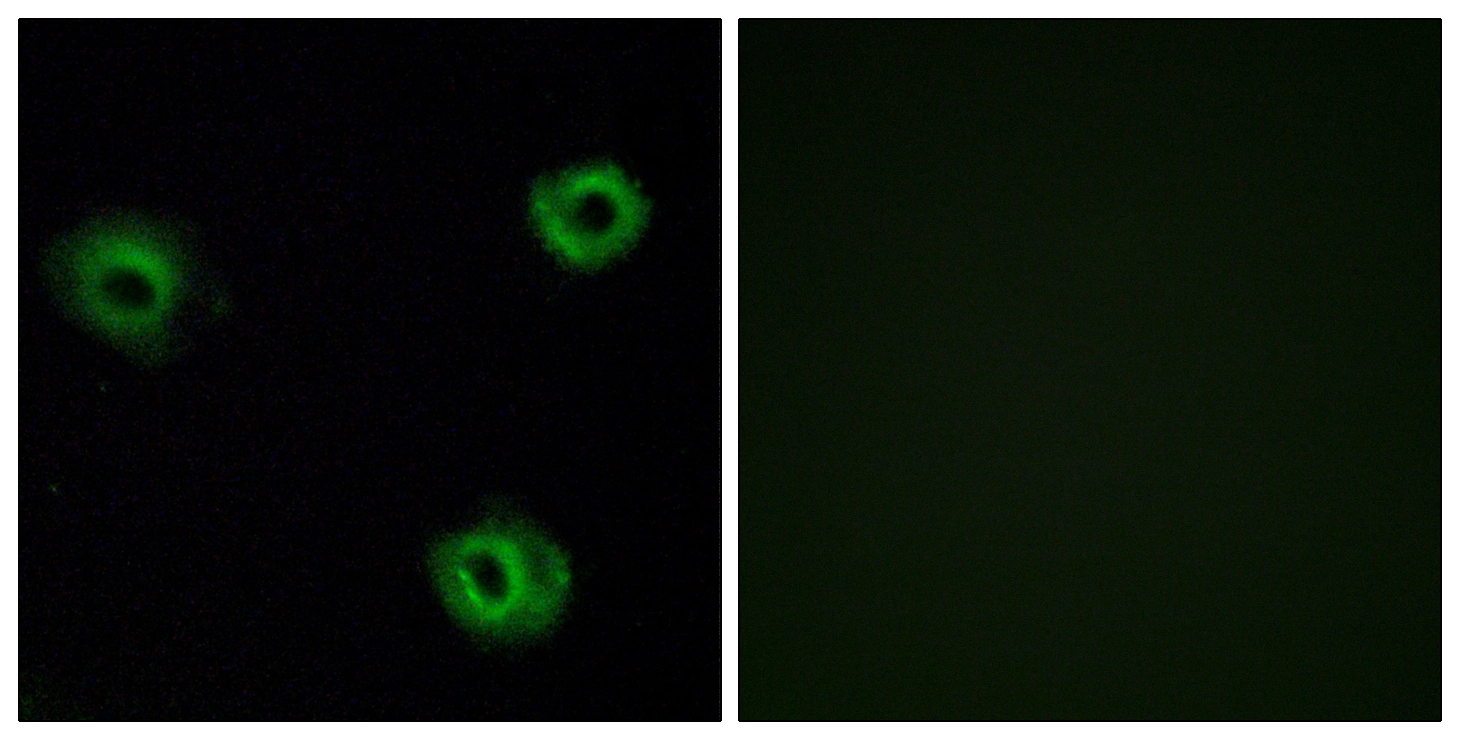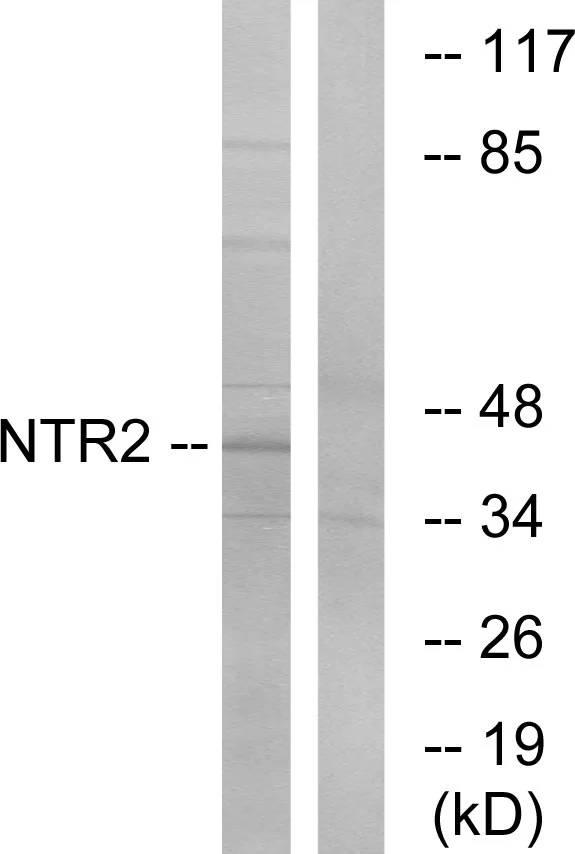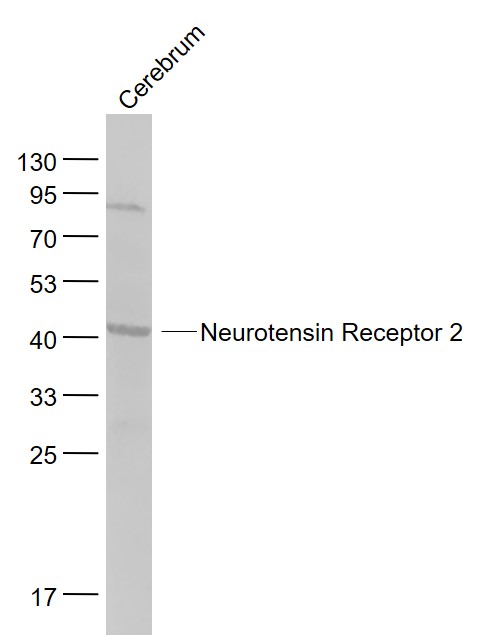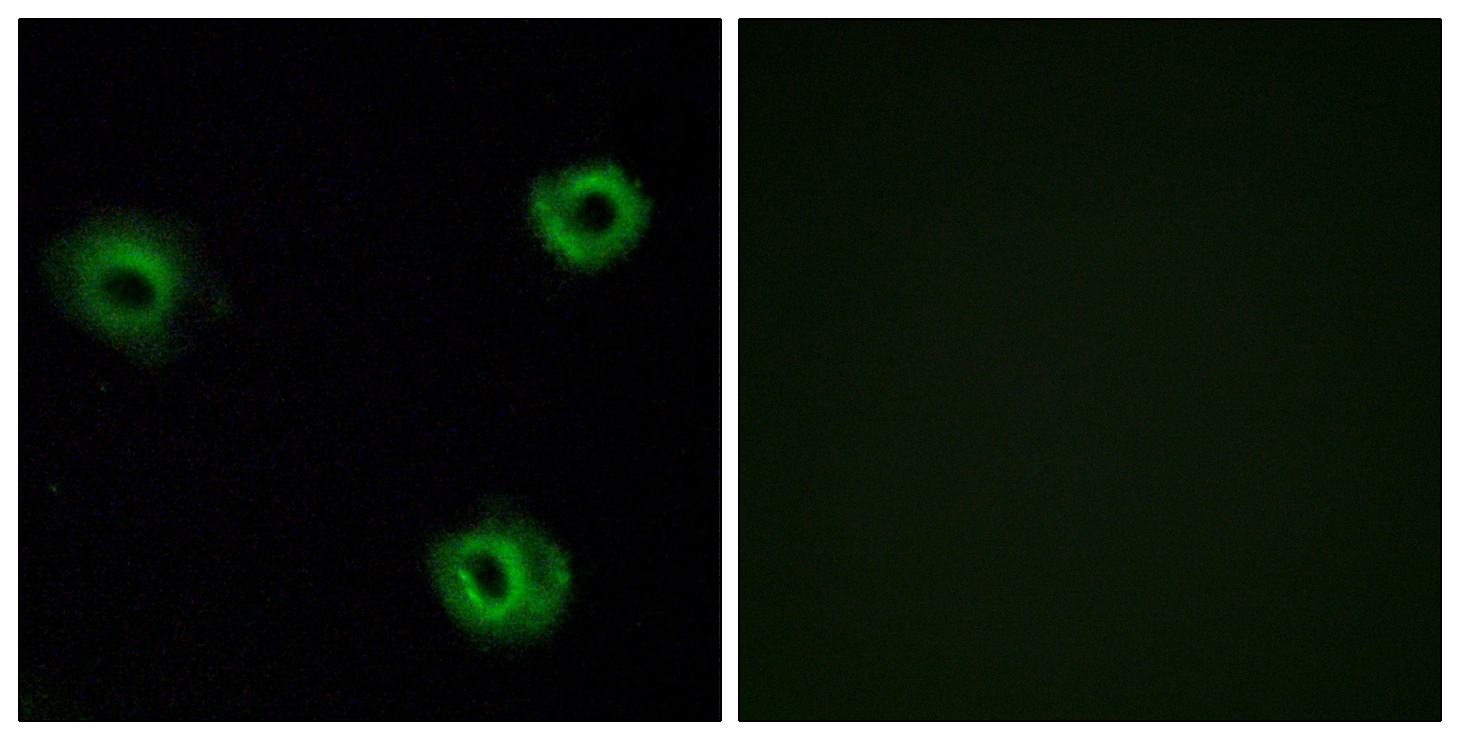
ICC/IF analysis of A549 cells using GTX87621 NTSR2 antibody. The picture on the right is blocked with the synthesized peptide.
NTSR2 antibody
GTX87621
ApplicationsImmunoFluorescence, Western Blot, ImmunoCytoChemistry
Product group Antibodies
TargetNTSR2
Overview
- SupplierGeneTex
- Product NameNTSR2 antibody
- Delivery Days Customer9
- Application Supplier NoteWB: 1:500~1:1000. ICC/IF: 1:100~1:500. *Optimal dilutions/concentrations should be determined by the researcher.Not tested in other applications.
- ApplicationsImmunoFluorescence, Western Blot, ImmunoCytoChemistry
- CertificationResearch Use Only
- ClonalityPolyclonal
- ConjugateUnconjugated
- Gene ID23620
- Target nameNTSR2
- Target descriptionneurotensin receptor 2
- Target synonymslevocabastine-sensitive neurotensin receptor; neurotensin receptor type 2; neurotensin receptor, type 2; NTR2; NT-R-2
- HostRabbit
- IsotypeIgG
- Protein IDO95665
- Protein NameNeurotensin receptor type 2
- Scientific DescriptionThe protein encoded by this gene belongs to the G protein-coupled receptor family that activate a phosphatidylinositol-calcium second messenger system. Binding and pharmacological studies demonstrate that this receptor binds neurotensin as well as several other ligands already described for neurotensin NT1 receptor. However, unlike NT1 receptor, this gene recognizes, with high affinity, levocabastine, a histamine H1 receptor antagonist previously shown to compete with neurotensin for low-affinity binding sites in brain. These activities suggest that this receptor may be of physiological importance and that a natural agonist for the receptor may exist. [provided by RefSeq, Jul 2008]
- Storage Instruction-20°C or -80°C,2°C to 8°C
- UNSPSC12352203






